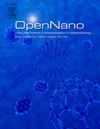Cellular viability in an in vitro model of human ventricular cardiomyocytes (RL-14) exposed to gold nanoparticles biosynthesized using silk fibroin from silk fibrous waste
Q2 Pharmacology, Toxicology and Pharmaceutics
引用次数: 0
Abstract
In nanotechnology, tissue engineering proposes obtaining nanomaterials of natural or synthetic origin, looking to incorporate components that exhibit a defined shape, diameter, colloidal stability, and biological identity to promote and regulate the events that occur in a cardiac cell microenvironment. This research aimed to evaluate cellular viability in an in vitro model of human fetal ventricular cardiomyocytes on interaction with gold nanoparticles biosynthesized using silk fibroin from silk fibrous waste. The Physicochemical properties were characterized by UV–visible spectroscopy, Fourier-transform infrared spectroscopy, electrokinetic potential, and scanning transmission electron microscopy. Moreover, the MTT assay was used to determine the cell viability of cardiomyocytes exposed to gold nanoparticles. The results showed that the variation of the pH of the reaction allows the synthesis of different geometries of nanoparticles with diameters between 6 and 334 nm. Furthermore, it was found that the nanoparticles with a tendency to sphericity favor the cell viability of cardiomyocytes.
体外模型中的人心室心肌细胞(RL-14)暴露于利用蚕丝纤维废料中的蚕丝纤维素生物合成的金纳米粒子后的细胞活力
在纳米技术中,组织工程学建议获取天然或合成的纳米材料,并将具有确定形状、直径、胶体稳定性和生物特性的成分纳入其中,以促进和调节心脏细胞微环境中发生的事件。这项研究旨在评估人类胎儿心室心肌细胞在体外模型中与利用蚕丝纤维废料中的蚕丝纤维素生物合成的金纳米粒子相互作用时的细胞活力。通过紫外-可见光谱、傅立叶变换红外光谱、电动势和扫描透射电子显微镜对其理化性质进行了表征。此外,还使用 MTT 试验测定了暴露于金纳米颗粒的心肌细胞的细胞活力。结果表明,改变反应的 pH 值可以合成不同几何形状的纳米粒子,直径在 6 至 334 纳米之间。此外,研究还发现,具有球形倾向的纳米粒子有利于心肌细胞的存活。
本文章由计算机程序翻译,如有差异,请以英文原文为准。
求助全文
约1分钟内获得全文
求助全文
来源期刊

OpenNano
Medicine-Pharmacology (medical)
CiteScore
4.10
自引率
0.00%
发文量
63
审稿时长
50 days
期刊介绍:
OpenNano is an internationally peer-reviewed and open access journal publishing high-quality review articles and original research papers on the burgeoning area of nanopharmaceutics and nanosized delivery systems for drugs, genes, and imaging agents. The Journal publishes basic, translational and clinical research as well as methodological papers and aims to bring together chemists, biochemists, cell biologists, material scientists, pharmaceutical scientists, pharmacologists, clinicians and all others working in this exciting and challenging area.
 求助内容:
求助内容: 应助结果提醒方式:
应助结果提醒方式:


